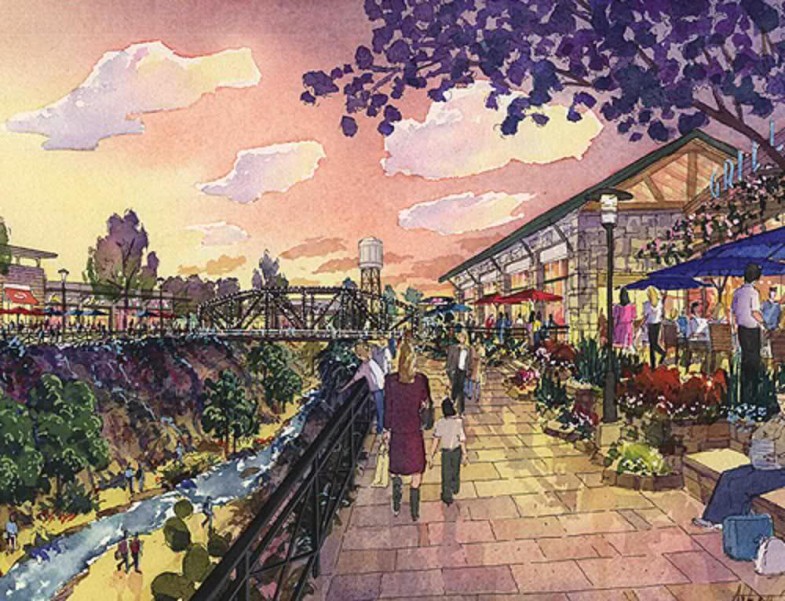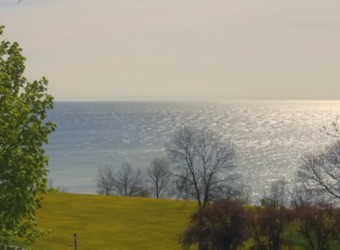Great public spaces resemble pornography, at least in the way the U.S. Supreme Court defines it: “You know it when you see it.”
Gazing upon great spots like the boulevards of Paris, the Old Town of Prague, Central Park in New York, or even the courthouse square or Main Street in a charming small town, and you naturally exclaim, “This is great!” You know because you’re attracted to that place, you want to be there, watching all the people passing by, soaking up the atmosphere. Sure, you might sit down to order a cup of coffee or browse through a book store, or even buy $40 of socks, but the real reason you’re there, and why you’ll come back again at the first opportunity, is the place itself. It’s where you feel at home, relaxed and energized at the same time. It’s where you feel a part of what my colleague at Project for Public Spaces, Kathy Madden, calls “the river of life.”
But while it’s easy to know great public space when you see it, it’s often quite difficult to know how to build a new one. Many projects setting out to establish a congenial spot for people to congregate — whether a park, shopping district, plaza, waterfront development, civic building, mall, or revitalized downtown — wind up as miserable failures, places that appear hostile to very idea of people enjoying themselves there.
William H. Whyte, the noted journalist and pioneering force (along with Jane Jacobs) in getting Americans to recognize the importance of public spaces, once observed, “It’s hard to create a place that will not attract people. What’s remarkable is how often this has been accomplished.”
You can’t blame the public for thinking that the ability to create urban spaces that lift people’s spirits has been totally bred out of contemporary planners and designers. It almost seems as if architecture schools and planning departments today offer instruction in how to make sure that the public areas of any project will remain eternally stark, forbidding and empty. The only time you find people in many of these newly designed places are in architects’ renderings, where sketchy figures eat ice cream cones or accompany balloon-toting children in deceitful drawings meant to hoodwink clients and public officials that people will actually want to visit these god-forsaken spots.
The reason so few of the world’s best public places have been built in recent decades is not just the cluelessness of modern designers about what people like, it’s the whole process of how we now build public spaces. Planning today is narrowly focused on specific outcomes—sales revenue per square foot of retail space, or vehicles moved per hour, or even unimpeachably admirable aims like affordable housing units created. And these narrow goals are achieved at the detriment of creating a space that works well for the public as a whole. These projects are a success to the extent that cash registers go ka-ching, cars move swiftly, or low-income people have a decent place to live, but they fail at the equally important mission of creating lively places where people can feel comfortable and happy hanging out and rubbing shoulders with their fellow citizens. It’s another example of the tragedy of the commons. The value of a particular place to the public as a whole is trumped by the more narrow privatized needs of retailers, motorists, tenants, etc.
It doesn’t have to be that way. Looking the world over you can find brilliant examples of public spaces that also succeed marvelously as shopping districts (virtually any lively downtown), transportation corridor (Paris’s boulevards, Barcelona’s famed Las Ramblas boulevard or Portland’s new trolley line) or affordable neighborhood (Harlem; some of the historic neighborhoods of Charleston, South Carolina; or two public housing projects that have been transformed in thriving communities: Park DuValle in Louisville and Diggs Town in Norfolk, Virginia.) All that’s needed is a perspective that takes in account a place’s broader role as a commons alongside its other purposes.
A great example of how to do this can be found, in all places, at a shopping mall in the Seattle suburb of Bellevue, Washington. At first glance, the Crossroads mall — a standard-issue 1970s enclosed mall surrounded by acres of parking — seems way off-the-radar of any movements to promote public space and preserve the commons.
But look again. Whimsical public art dots the parking lot, and cafe tables and sidewalk merchandise displays flank the entrances — just like in a classic downtown. An impressively well-stocked newsstand greets you in the hall of the main entrance, right next to a used bookstore. Wandering through the mall you find the local public library, a police station and a branch of city hall, where I am told “you can do nearly everything they do at the main office.” There are even comfy chairs stationed right outside the bathrooms and a giant-sized chess board where kids can push around pawns and bishops almost as big as they are. Some of the usual franchise suspects are here: Bed, Bath and Beyond; a JoAnn fabrics superstore; a Pier One store, but you’ll also find some locally-owned businesses too, like a wine shop and ceramics studio. The food court — where you can choose among Indian, Russian, Thai, Mexican, Korean, Greek, Bar-B-Que, Vietnamese, Italian, a juice bar or a burger joint— features local restaurateurs. Breakfast, lunch, or dinner arrive on a ceramic plate with metal (not plastic!) cutlery.
Many of the tables face a stage, where on this particular Thursday Black History Month is being observed with an impressive program of music, theatre and dance — all of it first rate. The audience is multi-ethnic, reflecting the changing demographics of American suburbia. The loudest applause comes from a delegation of pre-schoolers visiting from a nearby daycare center. Ron Sher, who transformed Crossroads from a failing mall into a spirited gathering place, sits down with me for lunch and, in between greeting customers, outlines the next phase of his vision. “I want a mix of upscale and affordable housing built on a part of the parking lot, so this could become a true town square that some people walk to.”
I pinch myself to make sure this is all real, that I am actually talking to a shopping center developer who is telling me, “I want to get people together with the city to discuss how to step this up be even more of a community center.”
Now, of course, I would prefer to hang-out in the Pike Place market, one of the world’s great public spaces a few miles away in downtown Seattle. So would many of the people here at Crossroads. But the fact is they live in Bellevue, and it’s a great thing they have a place where they can take care of their errands, meet their neighbors, and have some fun. If a lively public place and neighborhood commons can take root here, it can happen anywhere.






